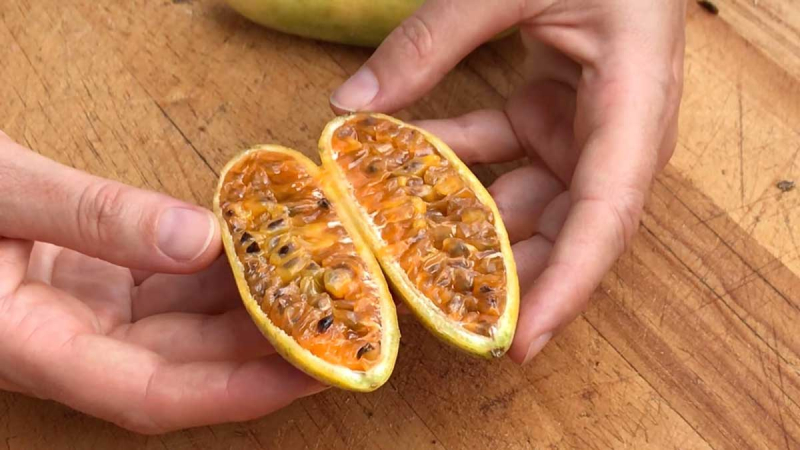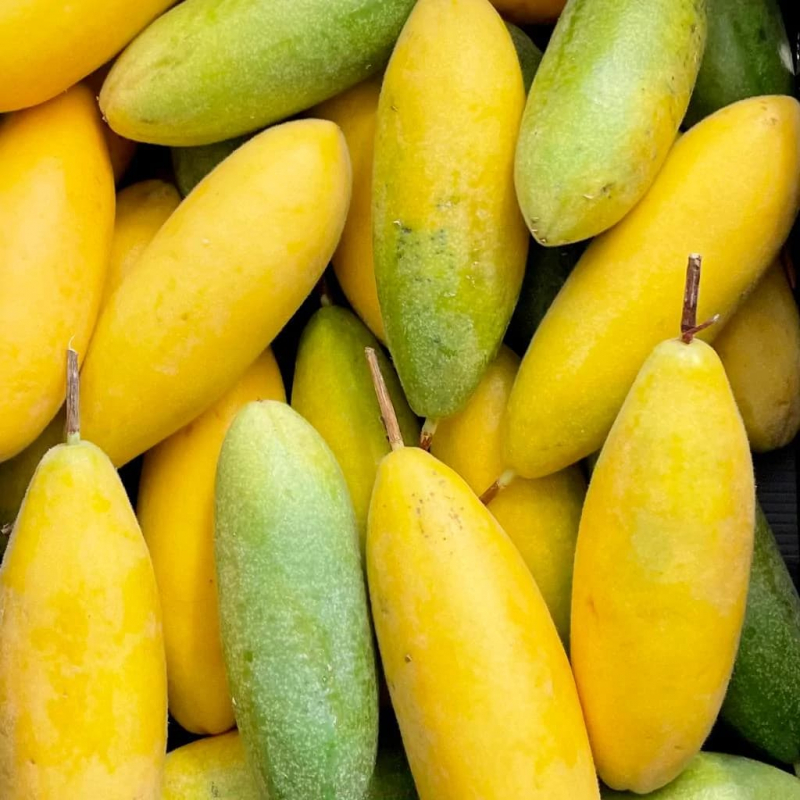Banana Passion Fruit
Banana passionfruit, botanically classified as Passiflora mollissima, is a species belonging to the Passifloraceae family. It originates from the Andean regions, including Peru, Colombia, Bolivia, and Venezuela. The seeds of this fruit were brought from Colombia and Ecuador to the US in 1920. The oblong, yellow fruits were named for their similarity in color and shape to a small banana and grow on evergreen climbing vines that can reach 6 to 7 meters in length. Banana passionfruit is a vigorous plant, maturing and bearing fruit in just one year. In its native habitat in South America, the vines can live for 15 to 20 years, and one single vine can produce 150 to 300 fruits per year.
Small to medium-sized, with an average size of 5 to 12 centimeters in length and 3 to 4 centimeters in breadth, and with a straight, oblong to ovoid form that tapers slightly at both ends, is the banana passionfruit kind. The skin ripens from green to pale yellow and becomes semi-thin, leathery, silky, and dusted with downy fuzz. Underneath the skin, the flesh is made up of tiny arils with flat, black, elliptic seeds encased in an orange-colored, meaty, watery, transparent pulp. The delicious, tropical aroma of the arils is evocative of oranges, and they are slippery and fragrant. The flavor of banana passionfruit is sweet, acidic to subacid, and tropical with hints of nectarine and peach. It is significant to remember that while the seeds are edible, they could taste harsh.












